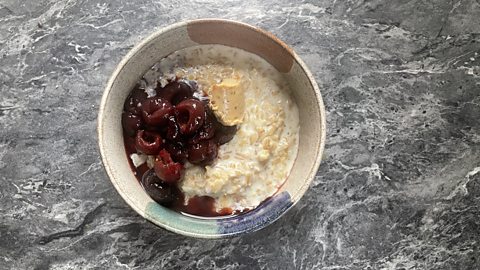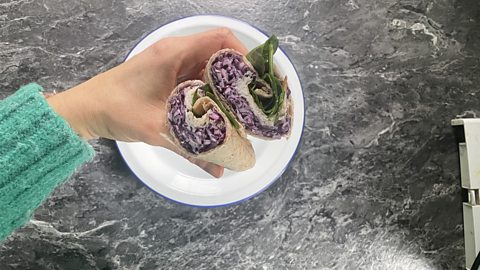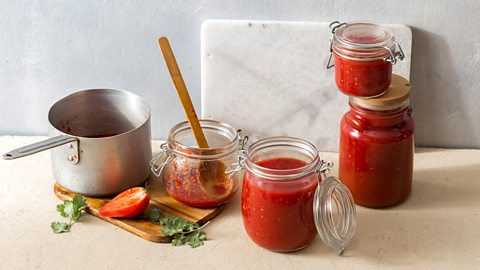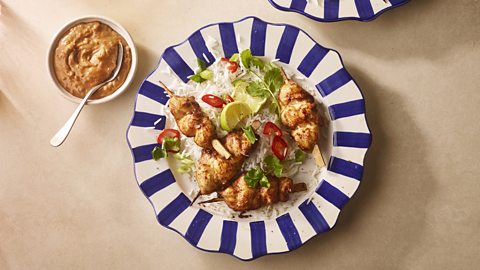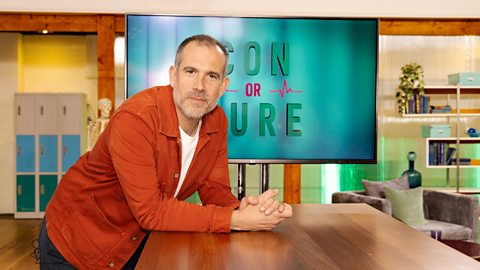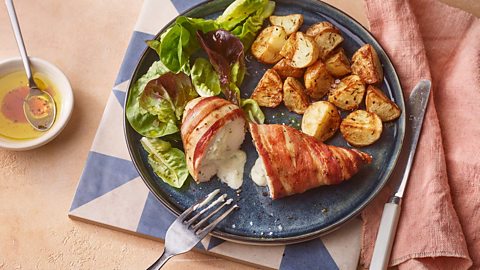A dietitian’s guide to eating enough fibre
Fibre can lower your risk of many health conditions. So how can you hit the recommended 30 grams a day, and what does that actually look like? We asked a dietitian to explain…
By Laura Tilt
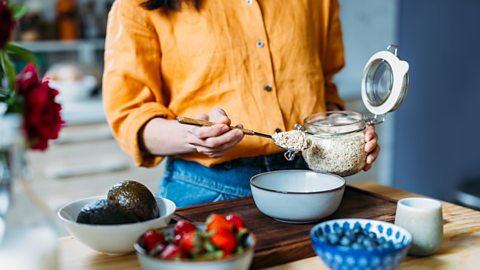
Protein has dominated the limelight in recent years, but there’s another nutrient that deserves your attention: fibre. High fibre diets have been linked with a lower risk of heart disease, stroke and type 2 diabetes.
Fibre is essential for a healthy and resilient gut microbiome and plays an important role in keeping you feeling full and satisfied after eating. Despite all these benefits, 91% of UK adults don’t get enough fibre in their diets.
What is fibre?
Fibre is the umbrella name for a group of carbohydrates found in plant foods like fruits, vegetables and grains. Most carbohydrates in our diet are broken down in the gut and absorbed before being used for energy. But fibre is different because we don’t actually make the enzymes to digest or absorb it. Instead, it travels through the gut to the large intestine, where it’s partly fermented (broken down) by your gut microbes.
Gut microbes use fibre as their main source of energy, which supports their growth. When microbes break down fibre, they produce beneficial compounds called short chain fatty acids, which help to maintain a healthy gut environment and play a role in regulating appetite.
Fibres which aren’t fermented bulk out poo and increase its water content, making stools softer and easier to pass. This is one of the ways that high-fibre diets might reduce the risk of bowel cancer. By helping us poo regularly, fibre reduces the amount of time that potentially harmful substances stay in contact with the lining of the bowel.
How much fibre should I be eating?
It’s recommended we eat 30 grams of fibre a day. This guideline was introduced in 2016 after a team of experts reviewed studies linking fibre intake and health, finding strong evidence that higher fibre intakes can protect against heart disease, stroke, type 2 diabetes and bowel cancer.
But almost 10 years on, there’s been very little change in how much fibre we’re eating. In fact, 91% of adults don’t meet the 30 gram target, despite various campaigns from health organisations. Data from the NDNS (the largest rolling survey of the UK’s diet and eating habits) shows that average intakes are just under 20 grams.
You could use oats in your pancakes to increase the fibre content
What foods are a good source of fibre?
Fibre is found in plant foods including:
- Fruits - fresh, frozen, and dried
- Vegetables, fresh and frozen
- Wholegrains like wholemeal bread, brown rice, oats, quinoa, wholemeal pasta and rye bread.
- Potatoes with their skins on
- Peas, beans and lentils
- Nuts and seeds like almonds, chia seeds and sunflower seeds
Which are the best high fibre foods?
Pulses - peas, beans and lentils - are one of my top recommendations for getting more fibre. Aiming to have one serving of pulses each day is a great habit to get into. Canned chickpeas and lentils are convenient, with half a can providing 6-7 grams of fibre. Try adding them to salads, soups, stews, curries and bolognese. Don’t forget about frozen peas either - you can add to pasta, scrambled eggs or have as a side to your main meal or on toast for a speedy lunch.
This ragu uses lentils, which are packed with fibre
Seeds are another easy, high fibre addition. Add a tablespoon of chia, flaxseed or mixed seeds onto yoghurt, oats, or into a smoothie for an extra 3-4 grams of fibre.
Lastly, make at least half of the grains you eat wholegrains. For example, swap two slices of white bread (2 grams of fibre) for two slices of wholemeal (5 grams) or rye bread (7 grams). Go for a wholemeal pasta with dinner and look for the wholegrain logo on breakfast cereals or go for porridge oats.
This recipe for overnight oats includes oats, figs, chia seeds, pumpkin seeds and nuts, so is packed with fibre
10 budget friendly foods that are packed with fibre
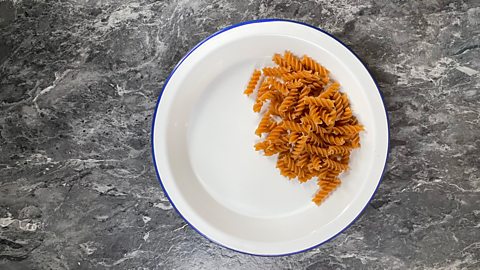 Image source, Laura Tilt
Image source, Laura TiltHitting your fibre target doesn’t need to cost a fortune either. Most high fibre foods are readily available and affordable. Here are just some examples.
| Food | Fibre |
|---|---|
| Rolled Porridge oats | 4.5 grams per half cup/50g |
| Canned chickpeas | 7g per half can |
| Seeded bread | 5g per two slices |
| Canned lentils | 6g per half can |
| Frozen peas | 4.5g per 3 tbsp (80g) |
| Frozen raspberries | 5.5g per 3 tbsp (80g) |
| Wholemeal pasta | 6.5g per 75g serving |
| Dried apricots | 3g per 3-4 dried apricots |
| Reduced salt/sugar baked beans | 7.5g per half can |
| Mixed milled seeds (mix of flax, pumpkin, chia) | 4.5g per 25g |

Is 30 grams of fibre a day realistic?
It does take some thought and planning, but it’s achievable once you know what to aim for. Researchers at the British Nutrition Foundation found you can reach the target while staying within recommended guidelines for sugar and fat by:
- Basing most of your meals around wholegrains
- Including 5–8 portions of fruit and vegetables each day
- Choosing fibre-rich snacks like nuts, seeds, or dried fruit
- Image source, Laura Tilt
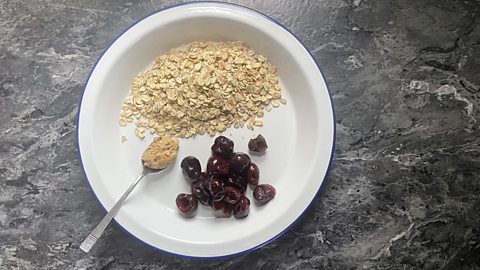
Image caption, Porridge ingredients
Cherries, oats and peanut butter make a fibre-rich porridge
1 of 2
When increasing your fibre intake, take it slow
Before I share some ideas on how you can reach the 30-gram target, there are two important things to keep in mind:
Increase fibre gradually: If you’re adding more fibre to your diet, do it slowly over a week or two. A sudden jump from low to high fibre can cause temporary bloating or gas as your gut bacteria adapt to the extra fuel. Give your gut time to adjust by making one small change every few days—start with breakfast, then add another adjustment later in the week.
You might need a different approach if you have an existing gut condition: If you have a gut condition like IBS (irritable bowel syndrome) or Crohn’s disease, you might need a tailored approach to fibre. Some types of high fibre foods can aggravate existing gut symptoms like bloating. A gut specialist dietitian can help you work out what you can tolerate comfortably.
What hitting 30 grams of fibre a day looks like
Here are some examples of the types of meals and snacks that will make hitting your daily fibre target easy. I tracked meals for two days to give you an idea.
| Meal | What to include |
|---|---|
| Breakfast | Porridge and fruit: 50g / half a cup of rolled oats (5g), milk of your choice to make the porridge, top with half a cup frozen cherries or berries (2g). Stir in a tsp of peanut butter (1g) |
| Lunch | Soup and Pitta: Red lentil and butternut squash soup (13g), 1 wholewheat pitta or flatbread, toasted (5g) |
| Dinner | Bolognese: Easy spaghetti bolognese (8g) with a cereal bowl of mixed salad (2g), Yoghurt |
| Total fibre intake | 34 grams |
- Image source, Laura Tilt
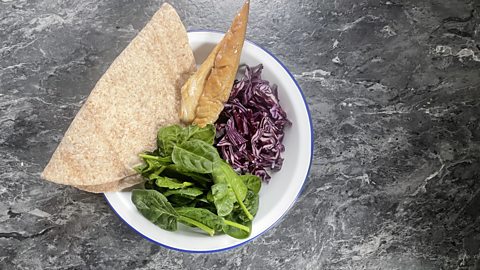
Image caption, Wholemeal wraps are surprisingly high in fibre
1 of 2
| Meal | What to include |
|---|---|
| Breakfast | Mango smoothie: 150g frozen mango (2g), 250g Kefir or plain yoghurt, 1 banana (3g), 1 tablespoon oats (1g) |
| Lunch | Mackerel or tofu and carrot slaw wrap: 1 wholemeal wrap (6g), filled with smoked mackerel or tofu and 80g shredded cabbage or carrot (2g) with a handful of spinach, some lemon and mayo. A medium apple (2g) |
| Dinner | Black bean curry and rice: Black bean curry (8g), serve with 75g (dry weight) brown rice (2.5g) fresh coriander and yoghurt |
| Snacks | 3 dried apricots (3g) and a handful of nuts (2g), 2 oatcakes (2g) with topping of your choice |
| Total fibre intake | 33.5 grams |
Please note: These menus are a guide to reaching 30 grams of fibre, and not designed for any specific health needs.
Originally published February 2024
Want more? Visit BBC Food on Instagram, Facebook and Pinterest. Want to watch the latest Food TV programmes? Visit BBC iPlayer.
